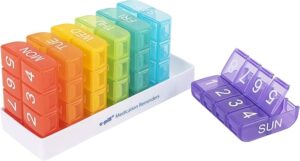A rollator walker is one of the most reliable mobility aids for seniors, providing support, balance, and independence in daily life. But just like any frequently used device, its parts experience wear and tear over time—especially the wheels.
The wheels of a rollator play a crucial role in ensuring smooth movement, stability, and safety. Worn-out or damaged wheels can make walking difficult, increase the risk of falls, and even damage floors. That’s why replacing rollator walker wheels on time is essential to maintain comfort and security.
In this guide, we’ll cover:
-
When and why to replace wheels
-
Different types of replacement wheels
-
Step-by-step instructions for replacing them
Whether you need standard 6-inch wheels or larger all-terrain options, this guide will help you make the right choice for continued mobility and independence.
When to Replace Rollator Walker Wheels
Just like car tires, the wheels on a rollator walker won’t last forever. Over time, they wear down, which can affect both safety and performance. Knowing when to replace them ensures seniors continue to enjoy stable and smooth walking support.
Here are the most common signs it’s time to replace your rollator wheels:
🔹 Cracks or Damage – If the rubber shows cracks, splits, or chunks missing, it’s time for new wheels.
🔹 Wobbling or Loose Fit – Wheels that don’t stay straight or feel unstable can make walking unsafe.
🔹 Reduced Grip – Worn-down tread reduces traction, especially on slippery floors, increasing the risk of falls.
🔹 Uneven Rolling – If the walker feels jerky or noisy while moving, it may be due to worn bearings or flat spots on the wheels.
🔹 Difficulty Pushing the Walker – When the rollator doesn’t glide smoothly, even on flat surfaces, wheel replacement is needed.
👉 How often should you replace rollator wheels?
While it depends on usage, most wheels last 12–24 months with regular daily use. Seniors who walk outdoors frequently may need replacements sooner due to rough surfaces.
Tip: Always check your wheels every few months for early signs of wear. Replacing them early prevents accidents and ensures the walker continues to provide reliable support.
Types of Rollator Walker Wheels
Not all rollator walker wheels are the same. Depending on your lifestyle, walking environment, and rollator model, you’ll find different types of wheels designed to provide specific benefits. Understanding the options helps you choose the best replacement wheels for your needs.
a) Standard Wheels
-
Usually 6 inches in diameter.
-
Ideal for indoor use and smooth, flat surfaces.
-
Lightweight and easy to maneuver.
-
Best choice for seniors who mostly use their walker at home.
b) Large All-Terrain Wheels
-
Typically 8-inch or 10-inch wheels.
-
Designed for outdoor use on uneven surfaces like grass, gravel, or sidewalks.
-
Provide better stability and shock absorption.
-
Recommended for active seniors who walk outdoors regularly.
c) Solid Wheels (Rubber or Plastic)
-
Durable and low-maintenance.
-
Won’t go flat or require inflation.
-
Offer smooth rolling on indoor and outdoor surfaces.
-
Most common type used in standard rollators.
d) Pneumatic (Air-Filled) Wheels
-
Work like bicycle tires, filled with air.
-
Provide extra cushioning and comfort on rough terrain.
-
Require regular air pressure checks and maintenance.
-
Great for seniors who prioritize comfort over convenience.
e) Swivel vs. Fixed Wheels
-
Swivel wheels (usually in the front) allow easy turning and maneuverability.
-
Fixed wheels (often in the back) provide stability and straight-line walking.
How to Choose the Right Replacement Wheels
When it’s time to buy rollator walker replacement wheels, not every option will fit your model. Choosing carefully ensures the wheels work smoothly, provide stability, and last longer. Here’s what to consider before buying:
1. Check Wheel Size
-
Rollator wheels commonly come in 6-inch, 8-inch, or 10-inch sizes.
-
Match the new wheels with the size recommended by your rollator’s manufacturer.
-
Larger wheels are better for outdoor use, while smaller ones are ideal for indoor maneuverability.
2. Material and Durability
-
Solid rubber or plastic wheels: Low maintenance and long-lasting.
-
Pneumatic (air-filled) wheels: Softer ride but require maintenance.
-
Choose based on your walking environment (indoor vs outdoor).
3. Compatibility with Your Rollator
-
Always check your rollator’s brand and model number.
-
Some replacement wheels are universal, while others are brand-specific.
-
If unsure, measure your current wheels and compare specifications.
4. Bearings and Axle Fit
-
Smooth-rolling wheels require good-quality bearings.
-
Check the axle diameter to ensure the wheel fits securely.
-
A mismatched axle can make the walker unstable.
5. User Lifestyle
-
Mostly indoors? Standard 6-inch solid wheels are fine.
-
Active outdoors? Opt for larger 8–10 inch all-terrain wheels.
-
Need maximum comfort? Consider pneumatic wheels for shock absorption.
✅ Pro Tip: When in doubt, consult the manufacturer’s manual or check the Amazon product description for compatibility details.
Step-by-Step: How to Replace Rollator Wheels
Replacing rollator walker wheels may sound technical, but it’s actually a simple process. With just a few tools and the right replacement parts, you can get your walker rolling smoothly again in no time.
Here’s a step-by-step guide:
Tools You’ll Need
-
Replacement wheels (correct size & type)
-
Wrench or screwdriver (depending on your rollator model)
-
Pliers (optional, for tightening bolts)
-
Lubricant (for smoother wheel movement, if needed)
Step 1: Check Compatibility
Before starting, ensure your replacement wheels are the correct size and compatible with your rollator model.
Step 2: Remove the Old Wheels
-
Place the walker on a flat surface.
-
Use a wrench or screwdriver to loosen the bolts/nuts holding the wheel.
-
Carefully slide the old wheel off the axle.
Step 3: Inspect the Axle and Bearings
-
Check the axle for any damage or rust.
-
If bearings are worn, replace them along with the wheel.
-
Wipe off dirt and apply a small amount of lubricant.
Step 4: Install the New Wheel
-
Slide the new wheel onto the axle.
-
Make sure it fits snugly and aligns properly.
-
Re-tighten the nut or bolt securely, but don’t over-tighten (it may affect smooth rolling).
Step 5: Test the Rollator
-
Push the walker back and forth on a smooth floor.
-
Ensure wheels rotate freely without wobbling.
-
Test it on both indoor and outdoor surfaces for stability.
✅ Tip: Replace wheels in pairs (front or back) for balanced movement and better stability.
Conclusion & Final Tips
A rollator walker is a lifeline for many seniors, offering independence, mobility, and confidence. But over time, the wheels can wear down, making walking more difficult and unsafe. That’s why choosing the right rollator walker replacement wheels is so important.
Here’s a quick recap:
-
Check compatibility → Match the wheel size and model before buying.
-
Choose durability → Solid rubber wheels are low-maintenance, while pneumatic wheels give more comfort outdoors.
-
Replace in pairs → For better balance and smoother rolling.
-
Maintain regularly → Keep the wheels clean and lubricated for a longer lifespan.
Keeping your rollator in top condition is essential for safety and smooth mobility. The right rollator walker replacement wheels can extend the life of your walker and improve stability. If you’re considering an upgrade, the Drive Medical Aluminum Rollator Walker offers lightweight durability, while the ELENKER Upright Forearm Rollator supports better posture. For everyday comfort at home, pairing your walker with Non-Slip Slippers for Elderly Men ensures extra safety on smooth surfaces.
By following these steps and picking from trusted Amazon USA products, seniors and caregivers can ensure the rollator walker stays safe, reliable, and easy to use.
👉 Final Tip: Don’t wait until wheels completely wear out. Replacing them early ensures better safety and smoother mobility for daily use.







